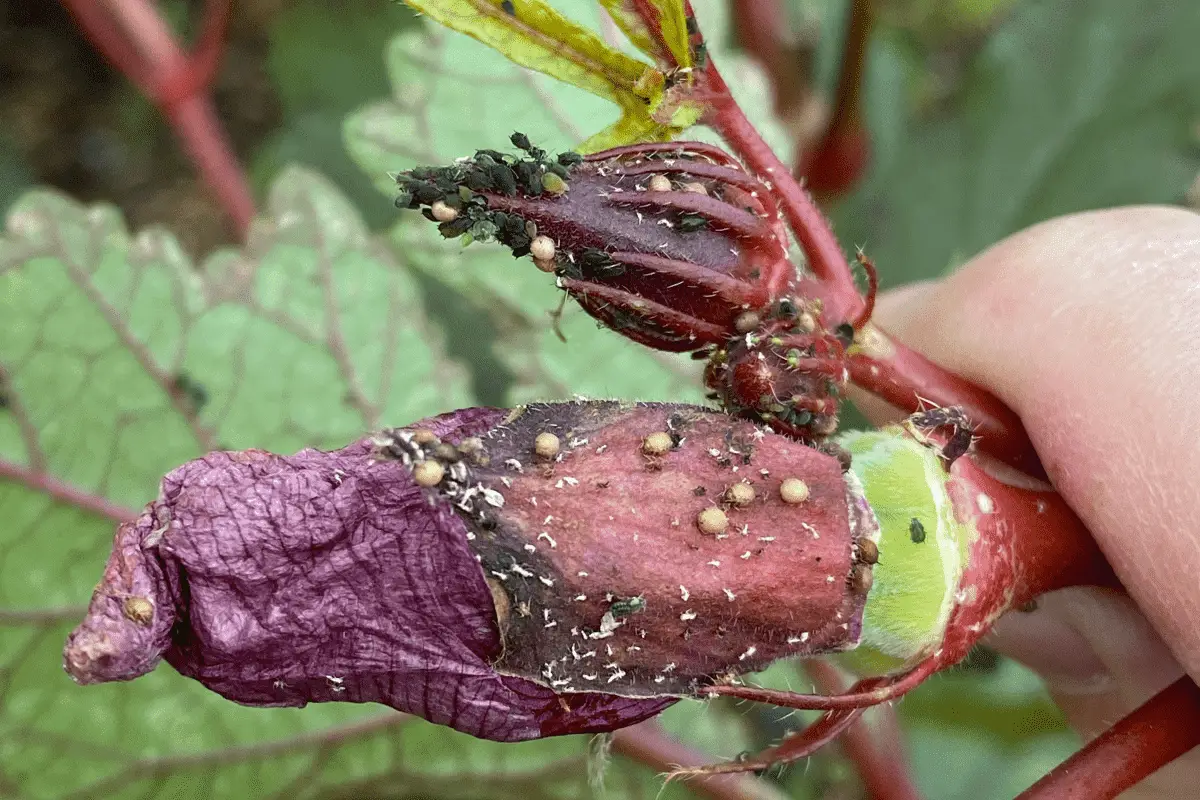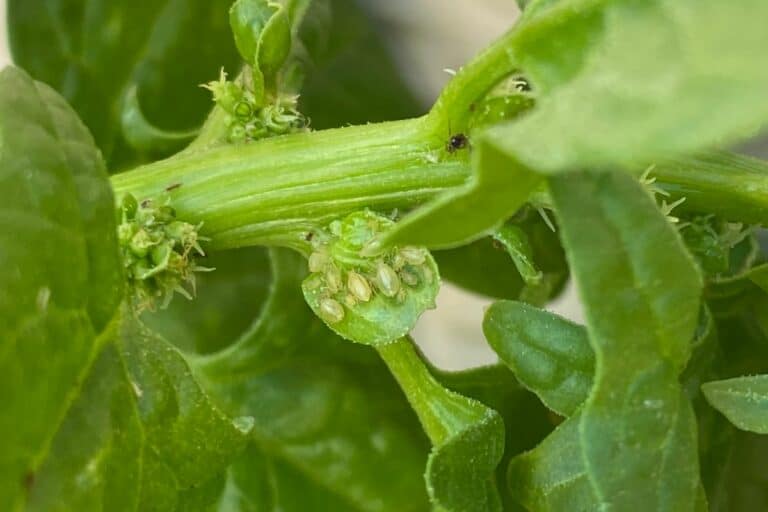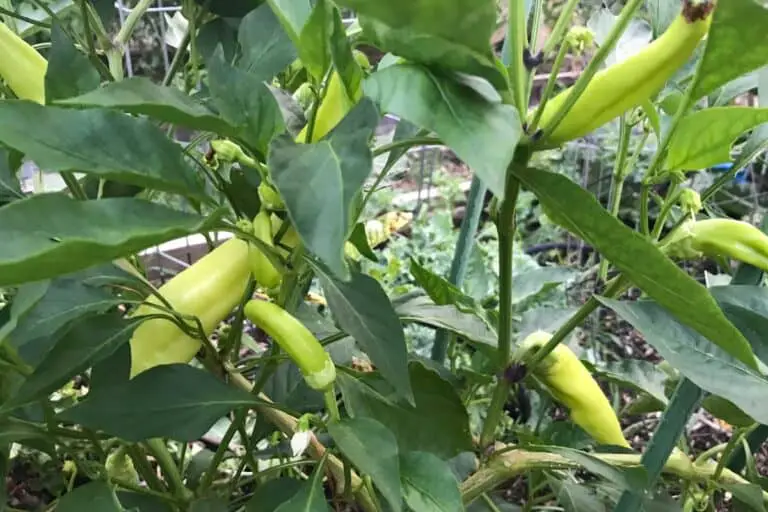Are Aphids Pollinators? A Brief Guide to Pollinating Pests
Have you ever seen aphids on your plants, possibly clustered around the buds or flowers?
I saw aphids on several okra plants last year, including quite a few aphids around the plants’ flowers, and it got me thinking: Do aphids contribute to the pollination process?
Although aphids don’t pollinate plants, they play an important, albeit indirect, role in the pollination process. Aphids attract hoverflies, one of nature’s most prolific pollinators, but they attract ants as well, which are known to reduce the number and duration of pollinator visits.
Simply put, unlike bees, butterflies, hoverflies, moths, and other pollinators, aphids don’t actually take part in the transfer of pollen from stamen to pistils even as they crowd around plant and flower foliage.
In order to understand why aphids don’t contribute to the pollination process even as they cluster around foliage and flowers, let’s look at the behaviors that differentiate them from other pollinating insects.

Are Aphids Pollinators? A Quick Overview
When it comes to aphids and pollination, there are 5 distinct things that separate aphids from other pollinators.
1. Aphids Prefer Phloem, Not Pollen
To understand why aphids aren’t doing much of anything when it comes to pollination, it helps to understand why they do what they do.
Unlike pollinators, who seek out nectar and pollen, aphids’ primary goal is to locate a plant’s phloem cells and siphon off its energy. Phloem tissue can be found beneath the plant’s epidermal layer and is responsible for transferring micronutrients throughout the plant.
Using their piercing mouthparts (called “stylets”), aphids pierce the epidermis, locate the phloem tissue, and siphon off the plant’s photosynthates (i.e. the byproducts of photosynthesis).
Unfortunately, this means that aphids don’t seek out stamens or pistils, like beetles and other bugs do. They instead seek out plant foliage, which means they sometimes get very close to flowers without actually getting pollen on their legs, doing nothing at all for the pollination process.
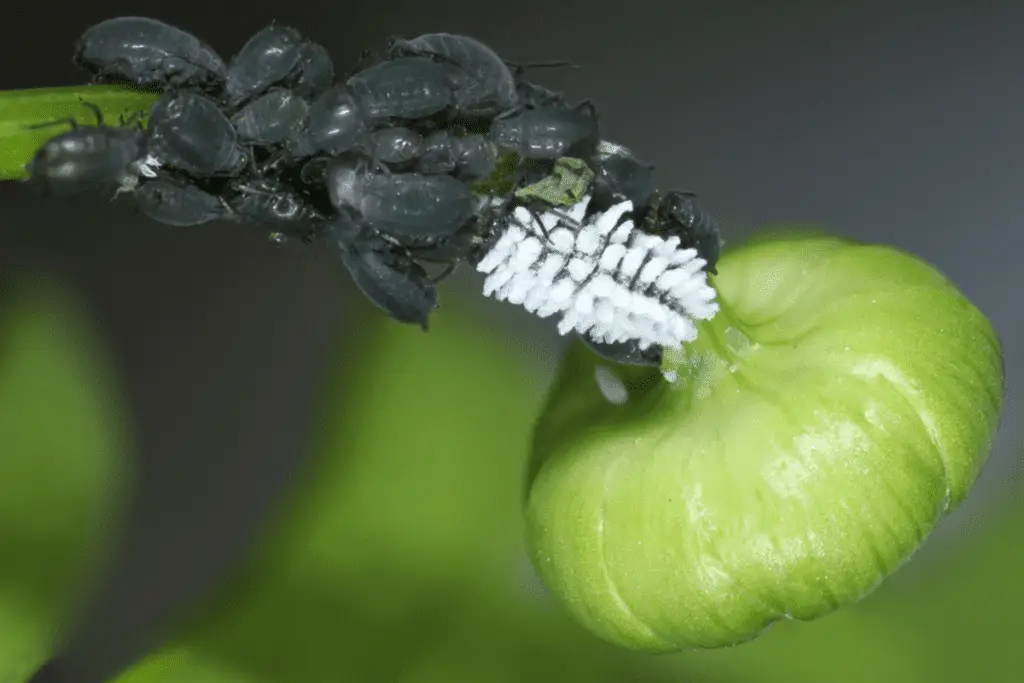
2. Aphids Like to Cluster
One thing that pollinators have going for them is their ability to act individually even when, like bees and wasps, they belong to a larger collective.
The same can’t be said of aphids. With the exception of winged aphids, who seek out new plants for the continuation of the colony, aphids tend to cluster together, producing nymphs who remain attached to the cluster, which means that they can be seen easily once they arrive in your garden.
As aphids cluster and grow in number, they siphon off more and more of the plant’s micronutrients while remaining in close proximity with their peers. Even if aphids decide to cluster near flowers, they typically prefer flower buds, not the flowers themselves, since the bud offers everything that aphids want–a tender, green layer of epidermis that gives them easy access to the phloem cells that are underneath.
3. Aphids Are Often Stationary
This might seem obvious, but the tendency to cluster means that aphids also have a tendency to remain in one place, not immobile per se but largely uninterested in frequent relocation.
Again, this has to do with aphids’ primary motivation. They want to suck sap from phloem cells more than anything else. As long as they have access to sap, they don’t have any good reason to move away from the source of their nutrition.
There are exceptions to this general rule, as we’ll see below when it comes to winged aphids, but in general, you’ll find that well-fed aphids are also stationary aphids.
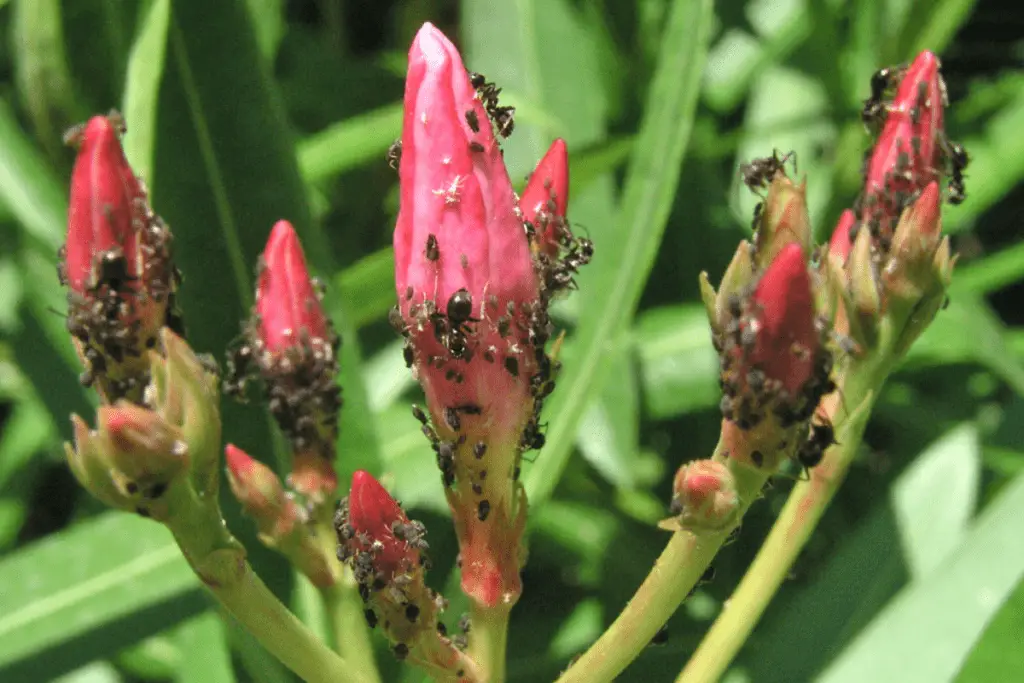
4. Aphids Attract Ants
As researchers have noted in studies related to pollinator frequency and duration and seed production, ants often have detrimental effects on plants. They kill off predatory bugs, they scare away beneficial insects and pollinators, and they decrease seed production in various plants.
Unfortunately, ants love aphids and will often seek out aphid-infested plants so that they can work among aphids and harvest the sugary honeydew that aphids secrete as they feed.
This means that if it’s not only do nothing for pollination. They also attract the kinds of bugs that scare off beneficial pollinators.
5. Aphids Attract Hoverflies
But aphids attract more than just ants. They also attract hoverflies, which love to prey on them while simultaneously pollinating plants.
This is why, as I noted above, aphids play an indirect role in the pollination process. They attract ants, which attack and scare away pollinators, but they also attract hoverflies, which are prolific pollinators.
In other words, aphids can have a substantial indirect effect on plant pollination—even though they don’t pollinate anything—because they can lure both garden pests and beneficial bugs to your garden.
6. Winged Aphids Seek Out Foliage
As spring turns into summer and summer transitions to fall, female aphids will begin producing winged versions of themselves that can leave the host plant and seek out new food sources, starting additional aphid colonies along the way.
Unlike butterflies and moths, winged aphids have no interest in nectar or pollen, so they’ll instead seek out plant foliage whenever they invade your property.
You’ll often see them on flower buds, but they’ll merely remain in or around the bud. They don’t have any interest in the flowers themselves. Their goal is to establish a new colony so that egg-producing aphids can lay eggs around the plant’s branches or buds that will sustain the colony in cold weather and help aphids survive the harsh winter months.
7. Orchids Mimic Aphids
If attracting hoverflies wasn’t enough to show that aphids play an indirect role in the pollination process, then let’s take a quick look at the astounding case of aphid-mimicking orchid flowers.
In one particularly fascinating study, a team of researchers discovered an unusual fact about the orchid species Epipactis veratrifolia. They discovered that E. veratrifolia orchids produce chemical compounds that are incredibly attractive to female hoverflies, inducing them to arrive and lay eggs in the flowers.
But here’s the amazing part: The chemical compounds are strikingly similar to alarm pheromones that aphids secrete when they sense danger.
What this means is that, over time, hoverflies evolved to sense such pheromones and seek out the pheromone-secreting aphids. But in turn, orchids have developed the ability to secrete incredibly similar chemical compounds in the hopes of luring hoverflies to their flowers, another example of the strange ways that aphids influence pollination through indirect means.
But there’s more: In yet another study, researchers discovered further aphid mimicry in orchids. In examining the Cypripedium subtropicum orchid, they realized that the orchid was not only emitting chemicals that attracted hoverflies. It also had markings on its labellum–the lip of the plant that provides a landing space for pollinators–that mimicked an aphid colony.
In other words, the C. subtropicum plant was not only sending out chemical signals to hoverflies. It had also somehow developed the ability to physically mimic an aphid infestation.
In each of these instances, aphids do nothing to directly pollinate plants. But what’s clear is the side effects aphids have on both plants and pollinators, which means that, in their own way, aphids sometimes play an important albeit indirect role in the pollination process.

Do Ants Pollinate Plants?
Now that we’ve looked at aphids and the ways that they influence pollination even as they take no part in it, let’s turn to a related question: Are ants pollinators?
Ants are drawn to the sweet nectar produced by flowers, but across numerous studies, researchers have determined that although ants can technically pollinate plants, they are often ineffective pollinators and frequently have a detrimental effect on the pollination process.
First, they compete with well-known pollinators and thus keep pollinators from doing their jobs properly. In one study, researchers determined that bumblebees transferred far more pollen to ant-free flowers than to flowers without ants. Apparently, bees are aware of ant scents and either avoid ant-infested areas entirely or shorten their visits to ant-infested plants to avoid attack.
In a different study, researchers looked at ants’ antibiotic secretions–that is, the antimicrobial compounds that ants produce to keep disease at bay–and found that these secretions negatively impacted pollen germination. Simply put, ants produce chemicals that damage pollen, leading to poorer overall germination rates.
But ants do more than merely scare off pollinators or damage pollen. They also rob plants of their nectar, as this study demonstrated. These so-called “nectar-robbing” bugs make pollination more difficult for butterflies by stealing much of the flower’s nectar ahead of time. As a result, the study showed that butterflies had to visit more flowers and spent less time on each individual flower because ants had already stolen much of the nectar.
In short, ants can technically pollinate plants, but they’re just as likely to scare away pollinators, damage pollen, and rob flowers of their nectar, all the while transferring insufficient amounts of pollen for proper pollination to occur.
Further Reading
If you’re interested in learning more about the symbiotic relationship between aphids and ants–and what it means for your garden plants–take a look at these articles:
